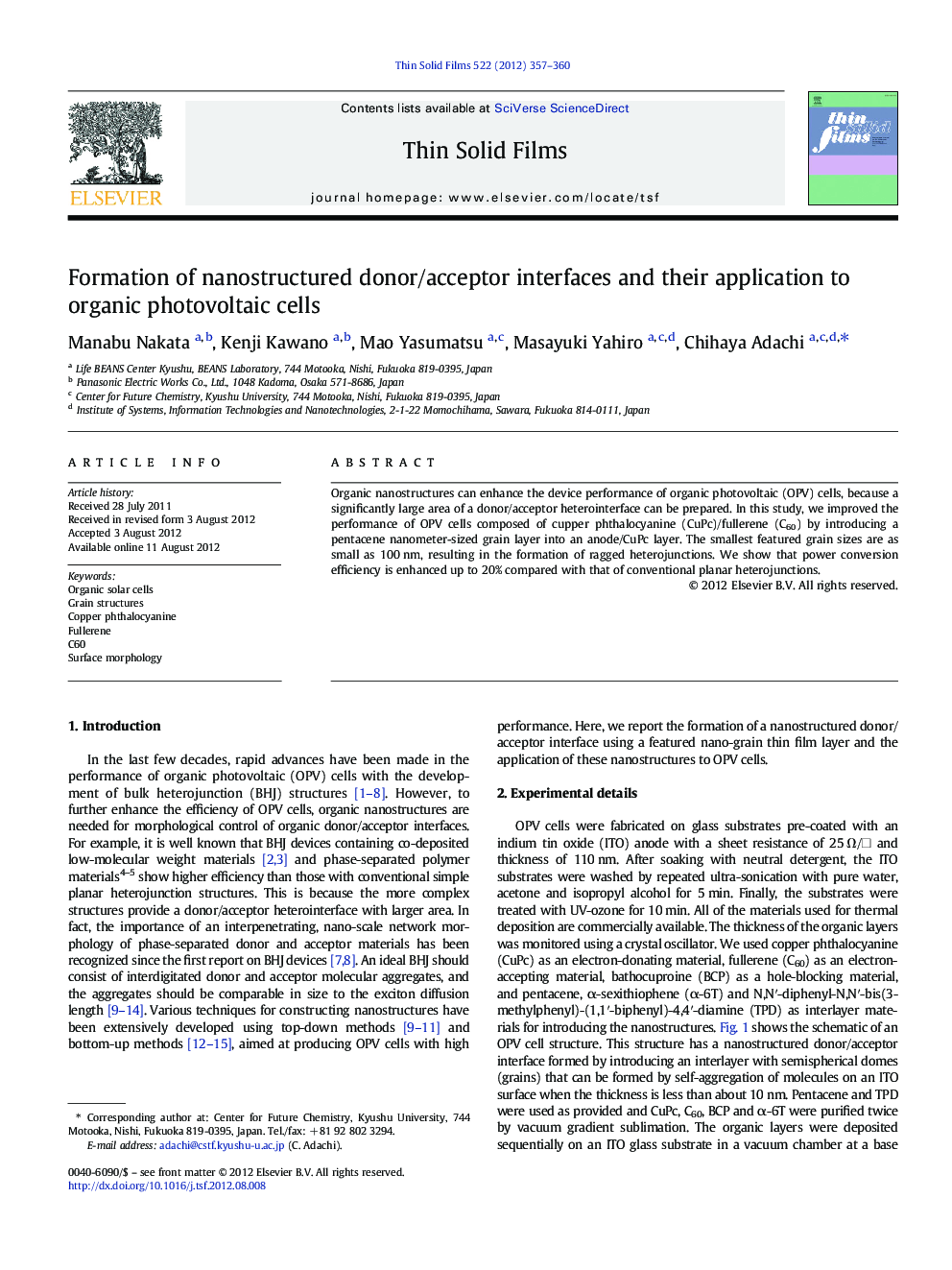| Article ID | Journal | Published Year | Pages | File Type |
|---|---|---|---|---|
| 1666668 | Thin Solid Films | 2012 | 4 Pages |
Organic nanostructures can enhance the device performance of organic photovoltaic (OPV) cells, because a significantly large area of a donor/acceptor heterointerface can be prepared. In this study, we improved the performance of OPV cells composed of cupper phthalocyanine (CuPc)/fullerene (C60) by introducing a pentacene nanometer-sized grain layer into an anode/CuPc layer. The smallest featured grain sizes are as small as 100 nm, resulting in the formation of ragged heterojunctions. We show that power conversion efficiency is enhanced up to 20% compared with that of conventional planar heterojunctions.
► We prepared a nanostructured donor/acceptor interface by introducing interlayers. ► Power conversion efficiency is enhanced up to 20% compared with conventional cells. ► 50% of enhancement is due to lateral orientation of Cu-phthalocyanine (CuPc) molecules. ► The other 50% is due to an increase of surface area between CuPc and C60.
